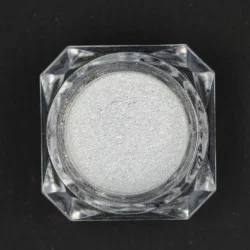Here are key features and considerations related to interference pigments
2023-12-29
Interference pigments are special types of pigments that create color effects through the interference of light waves. Unlike traditional pigments that absorb certain wavelengths of light and reflect others, interference pigments manipulate light to produce unique and dynamic color effects. These pigments are widely used in various industries, including cosmetics, coatings, plastics, and printing, to achieve iridescent and pearlescent finishes. Here are key features and considerations related to interference pigments:
1. Optical Interference:
- Thin Film Interference: Interference pigments typically consist of thin, transparent layers that interfere with the reflection and transmission of light.
- Constructive and Destructive Interference: The interference of light waves can result in constructive interference (intensifying certain colors) or destructive interference (cancelling out certain colors).
2. Mechanism of Color Generation:
- Thin Layer Structure: The color effect is generated by the interference of light waves as they travel through the transparent layers of the pigment.
- Multiple Layers: Interference pigments often consist of multiple layers, each with a specific thickness, to achieve the desired color effect.
3. Color Range:
- Iridescent Colors: Interference pigments can produce a wide range of iridescent colors, including metallic shades, pastels, and vibrant hues.
- Color Shift: Some interference pigments exhibit color shift effects, changing color when viewed from different angles.
4. Applications:
- Cosmetics: Used in cosmetics and personal care products, such as eyeshadows, lipsticks, nail polishes, and skincare products, to create shimmering and iridescent effects.
- Coatings: Applied in automotive coatings, industrial coatings, and architectural paints to achieve unique color and finish effects.
- Plastics: Used in the coloring of plastics and polymers for applications such as packaging, consumer goods, and automotive interiors.
- Printing Inks: Utilized in the printing industry for specialty printing applications to create eye-catching effects.
5. Particle Size and Distribution:
- Particle Size: The particle size of interference pigments influences the color and intensity of the interference effect.
- Uniform Distribution: Achieving a uniform distribution of interference pigments in a matrix is crucial for consistent color appearance.
6. Matrix Compatibility:
- Polymer Compatibility: Interference pigments are compatible with various matrices, including both water-based and solvent-based systems.
- Binder Systems: Formulators need to choose binders and carrier systems that ensure proper dispersion and stability of interference pigments.
7. Angle of View:
- Color Shift with Viewing Angle: Interference pigments can exhibit color shift effects when viewed from different angles. This property is known as angle-dependent coloration.
- Angle of Incidence: The angle at which light strikes the pigment can influence the perceived color.
8. Layer Thickness Control:
- Manufacturing Precision: The control of layer thickness during the manufacturing process is critical for achieving consistent and desired color effects.
- Layer Stacking: Some interference pigments involve stacking multiple layers to enhance the color range.
9. Environmental Stability:
- Lightfastness: Interference pigments are generally stable under light exposure, but their performance can be influenced by the environment and formulation.
- Weather Resistance: Consideration should be given to the resistance of interference pigments to environmental factors such as humidity and temperature.
10. Regulatory Compliance:
- Regulatory Approvals: Interference pigments used in cosmetics and other applications must comply with relevant regulations, such as those outlined by regulatory bodies like the FDA (U.S. Food and Drug Administration) or European Union regulations.
Interference pigments offer a visually striking way to achieve unique color effects in a variety of products. Formulators and manufacturers should carefully select interference pigments based on the specific requirements of the application and the desired visual effects.



